As more businesses move their enterprise content to cloud environments, the need for accurate file metadata (and its application for workflows) become more and more important as file taxonomy structures 'flatten out' in the cloud.
Metadata provides detailed information about files and it lets us understand what they contain, and therefore how they need to be managed. Without metadata, any two (or more) files can look and feel the same.
The ability to not only identify, but then also apply rules and actions to files based on content and context, facilitates streamlined, enterprise-wide, data governance.
5 Ways to use Metadata:

1) Start with file metadata.
Tombstone metadata defines what it is at the file level.
File metadata is metadata that is system-generated when a file is created. It defines the physical properties of a file including file type (Word, Excel, Email) and often other standard attributes such as User Account, Created Date, and Last Modified Date. While helpful, file metadata is limited and does not give insight as to the content of the file, such as its purpose; its intended users; important people, topics or business areas mentioned; or how sensitive its contents may be.

2) Layer rich metadata.
Rich metadata applies attributes about the file contents.
Applying rich metadata allows us to apply further attributes related to the contents of a file to "see" and "understand" what the file is, so as to be able to define and action it appropriately. Is it a contract? A blueprint? An employee file? A record? Does it contain personal data and need to be protected? Should it be under Legal Hold? Is it past its retention period?

3) Understand the context.
Metadata gives better understanding of content beyond straight searching.
Since metadata tells you exactly what you have, you can now sub-divide content based on attributes. Metadata gets you value-based understanding of content, rather than time-based. Avoid throwing the baby out with the bathwater, as well as hanging onto pointless, wasteful content (ROT) and keep your migration, DSAR or FOIA response, litigation production or records repository clean.

4) Add rules to rich metadata.
Disposition rules dictate what to do with content at all stages and priorities.
The application of rich metadata becomes the cornerstone to intelligent, content-driven rules for managing information. Software algorithms determine the disposition & handling of content (typically following an IF-THEN conditions-matching format). dictating and automating everything from identification and storage, to migration, security access, notifications and compliance.

5) Other applications beyond IG & IM.
Apply the same processes & procedures to other areas of the business.
The management of metadata has real business applications beyond Information Governance and Information Management use cases such as:
- eDiscovery: Using rich metadata helps sort for relevance and privilege, early case assessment, litigation readiness and other “left of the EDRM” applications.
- IT & Business Transformation: Consistent application of rich metadata tagging employs best practices on content creation, storage, management, usage and disposal.
- Data Privacy: Use metadata to find sensitive & personal data and apply AutoRedaction and access security controls to permission user access.
CASE STUDIES
See how other enterprises used AutoClassification for rich Metadata application:
• AutoClassifying 30 Years of Documents
• City-wide AutoClassification of 30TB of Data
• Extracting Metadata from Blueprints, Drawings & Text
WEBINARS
View our on-demand webinars on metadata automation & application best practices:
• It's Not Just Content, It's Context: Automating Enriched Metadata
• Creating Structure from Unstructured Data
• ILTA Presents: AutoClassification Master Class




